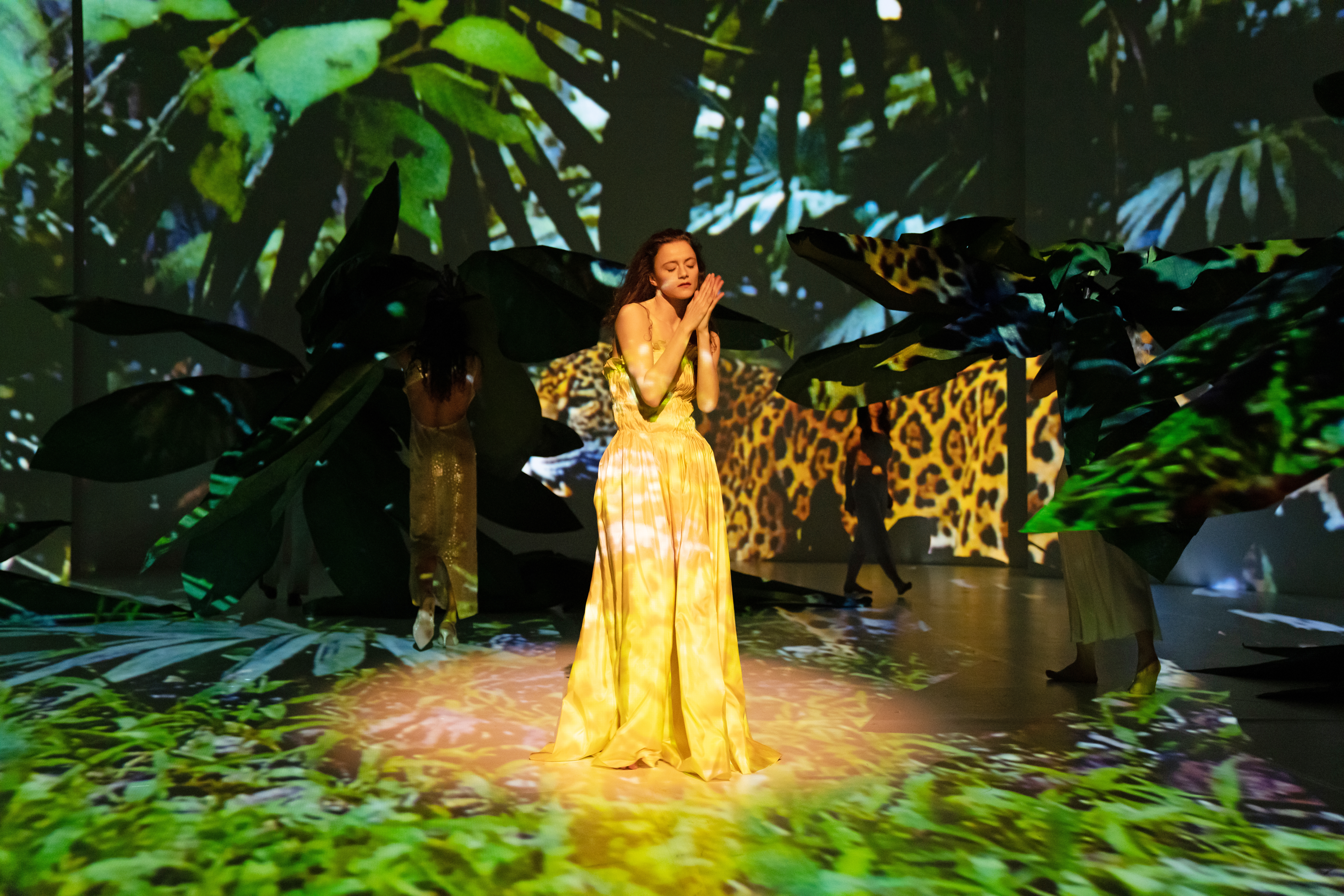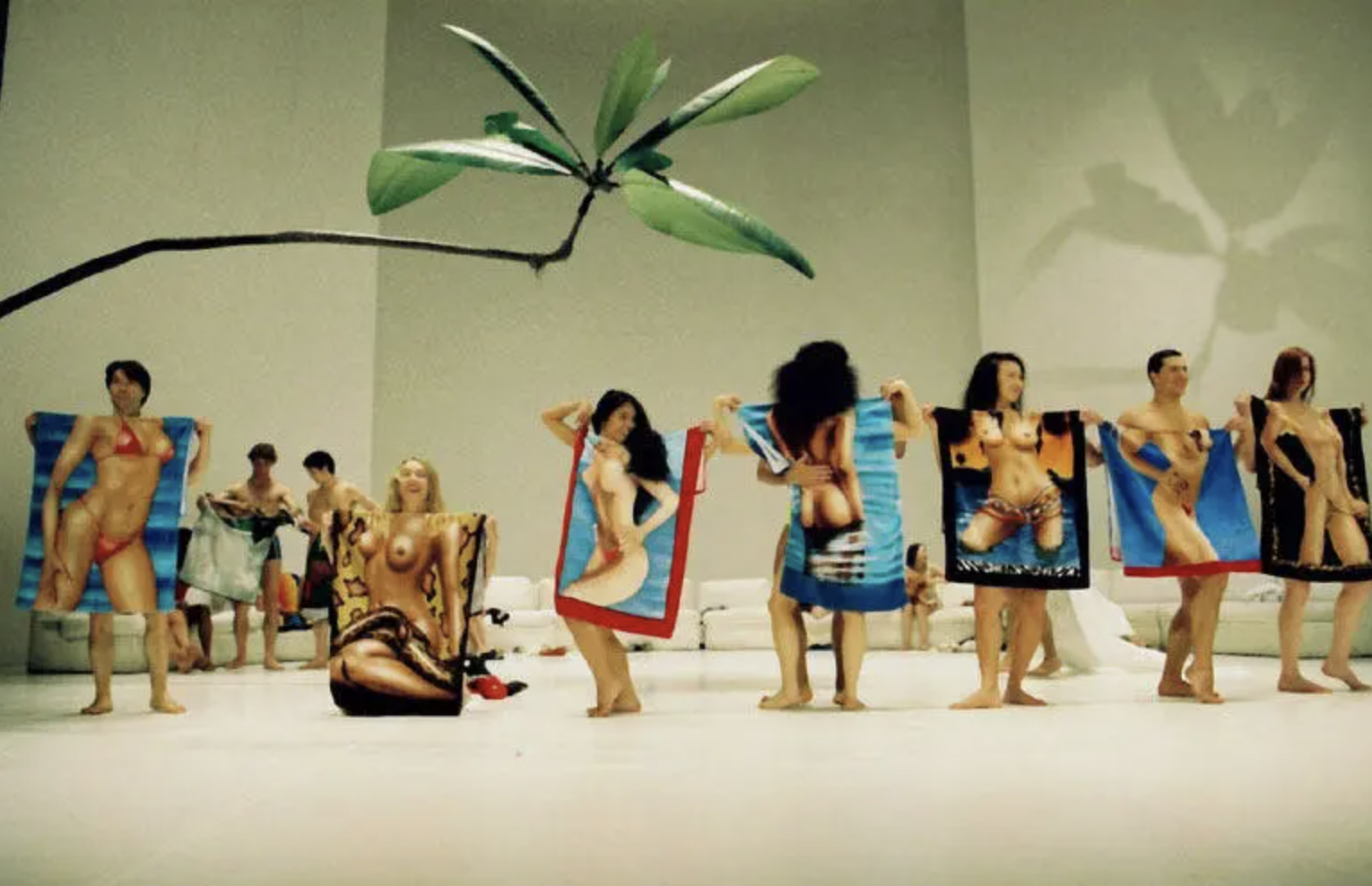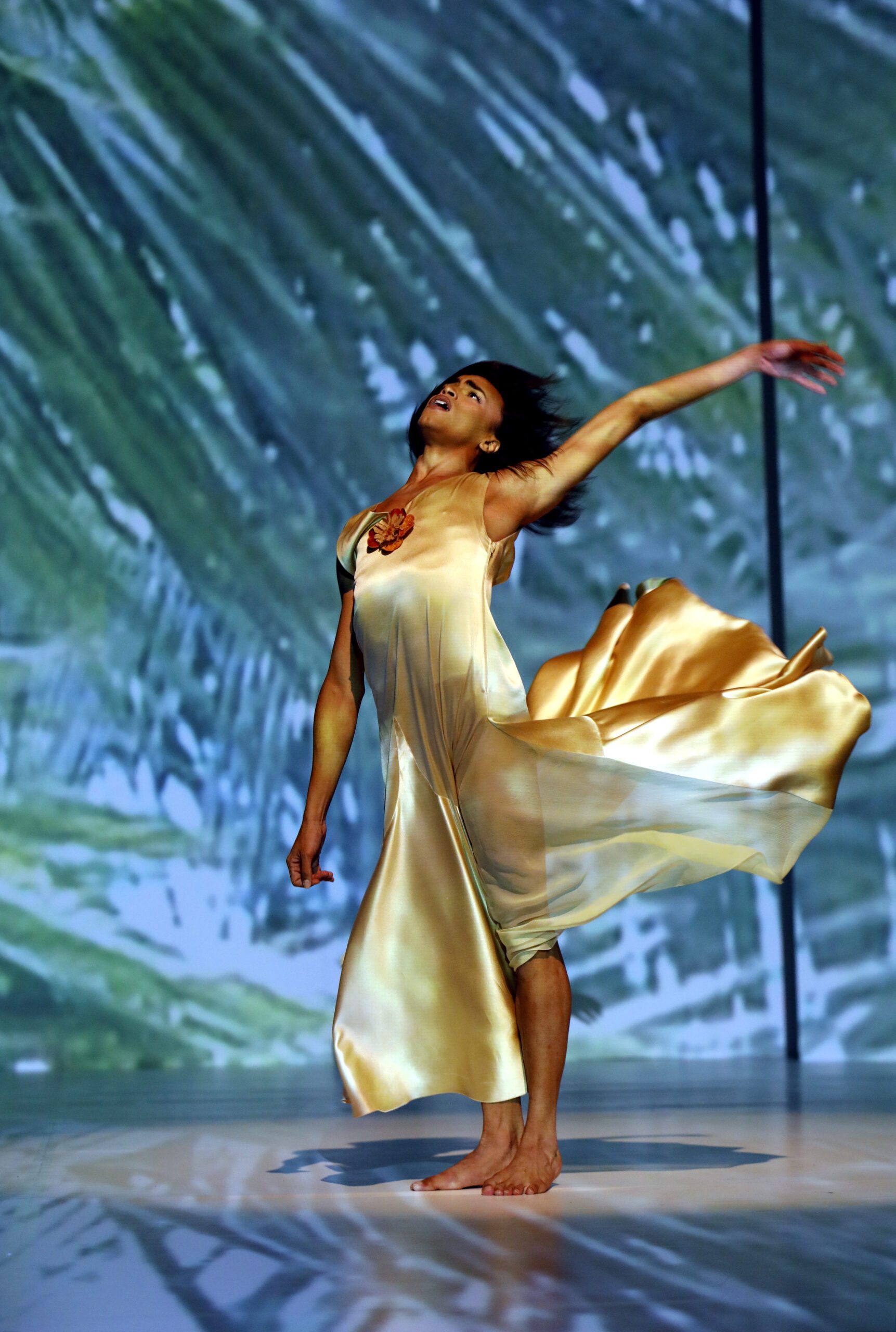Ensemble photo by Julieta Cervantes
Water, Sun, Sexuality: Pina Bausch’s ‘Água’ makes a splash at BAM
Joyous dancing, billowing palm trees, cascading waterfalls: Bausch’s long collab with BAM takes a sensual spin
Pina Bausch, one of the most influential and original choreographers of the 20th century, once famously said, “I’m not interested in how people move but what moves them.”
It is in that spirit that the Brooklyn Academy of Music aims to transport audiences to a hypersexual, decadent, color-filled world where dance meets theater in a dazzling collision of the real and the surreal.
From the moment the curtain opens on Bausch’s 2001 “Água,” which runs at BAM through March 19, the stage is alive with color and energy as dancers spin, jump, and twist in a series of playful vignettes set in an exuberant vision of Brazil.
The music’s heady, eclectic blend of pop, rock, jazz and Latin rhythms pulses with vitality, while video projections on a curving back wall keep the set in constant motion. Nature is everywhere: billowing palm trees, wing-flapping flamingos and luxuriant vegetation create a stunning backdrop as high-flying performers move their flirty hips to the seductive, rhythmic beats.
And the dancers themselves seem to defy gravity. At one point, a lifted dancer seems to impossibly fly through the palm trees. It’s done so lightly, quickly, easily.

Photo by Julieta Cervantes
Like water for dance
Bausch, who died in 2009, just five days after a diagnosis of cancer, spent her life traveling the world and drawing inspiration from diverse cultures, translating her experiences into sensory-filled dances. “Água” (“water” in Portuguese) is perhaps her most whimsical and visually exciting piece which sprang to life during a residency in Sao Paulo.
I say “piece” because Bausch never considered her work “dance,” but, rather, “a mixture of elements,” as she wrote in an essay published in1985 for the BAM journal on The Next Wave. “I don’t know what it is. They dance; people talk; others sing.We use actors, too. And we use musicians. It’s theater, really.” Which is perhaps why her company is known as Tanztheater (literally, “dancetheater”) Wuppertal Pina Bausch. In other words, if you’re looking for a cohesive narrative, go see “The Sign in Sidney Brustein’s Window.”
Whatever one calls it, “Água,” unlike Bausch’s earlier and darker work, is surely the happiest piece she ever made. What makes it stand out is not only the way in which the dancers interact with the set, props, and music but also their dizzyingly glamorous, billowing costumes, some with blinking light bulbs.
Unafraid to challenge gender roles in her work, Bausch incorporates beach towels with curvy female bodies that the dancers — male and female — fold themselves into for a sexily silly effect.


Photo by Ursula Kaufmann
The dialog, too, is both comical and absurd. One woman strokes her beautiful brown legs with a brush while another says, “don’t pass the line” which, of course, is meant to be, “don’t cross the line.” Another dancer, who wants to saw off the leg of a table, utters: “I wanted to go crazy but that’s not possible.”
The themes of nature and water are highlighted throughout the piece. In the show’s final vignette, the dancers’ bodies are superimposed on swirling projections of the Amazon rainforest inhabited by leopards, orangutans (which do not actually live in Brazil, but hey, this is a fantasy) and monkeys swinging from tree to tree. Ultimately, we come to the breathtaking Iguazu Falls, the largest waterfall system in the world — taller than Niagara Falls and twice as wide.
The natural beauty of the rainforest and the monumental force of the cascading waterfall enhance the dancers’ expression of ecstasy.
The water, confined to video screens throughout the show, becomes three-dimensional at the end, actually drenching the bodies of the dancers. Soon they are sipping water from plastic bottles and childishly spurting water on one another, soaking their clothes like children splashing in the ocean.
Though “Água” is three hours long (perhaps too long for some), it is such a delightful pastiche of travelog, humorous vignettes, romantic encounters, cocktail parties, tropical beaches, and foolish dialogue that the time whizzes by.


Photo by Julieta Cervantes
A long collaboration with BAM
Pina Bausch made her New York debut with Tanztheater Wuppertal at BAM in 1984, on the heels of her American debut at the Los Angeles Olympic Arts Festival.
Strongly influenced by German Expressionism, the New York program included Bausch’s interpretation of Igor Stravinsky’s “Rite of Spring,” choreographed in 1975, in which the stage floor was covered in dirt, and “Café Müller,” choreographed in 1978. (“Café Müller” appears in the opening of Pedro Almodóvar’s 2002 film “Talk to Her.”)
“To say that it was a New York sensation is an understatement,” says Sharon Lehner, director of the BAM Hamm Archives. “People lost it. It was an unbelievable hit. Virtually every performance sold out.” Or, as the New York Times put it: “the place was mobbed.”
And thus was born Bausch’s long-lasting relationship with BAM: Following that 1984 debut, Bausch and her company continued to captivate New York audiences for years to come. “That is now almost 40 years,” says Lehner. Their 15 successive performances have been some of the most popular and highly anticipated events at BAM, the company’s sole New York home and the country’s oldest performing arts institution.
Bausch first gained international recognition in the 1970s for her innovative blend of dance and theater. But it took a long time for her to get to America.
“People were very much against her here at first,” says performance artist Marina Abramović, who has recently become the first holder of the new Pina Bausch Professorship at the Folkwang University of Art in Germany.
“Americans always claim that only they can claim modern dance,” continues Abramović. “In their eyes there was only Isadora Duncan, Martha Graham, and later Trisha Brown: that was the holy grail. But when people saw her Tanztheater Wuppertal’s performances in New York, they had the feeling of a great discovery. Their repertoire of movement and their new understanding of dance. It was all highly emotional and absolutely groundbreaking.”
“Água” marks the first time in six years that the company, which is based in Germany, has returned to BAM, largely due to the pandemic.
“Hard-core Pina fans wait eagerly for the company to return while new devotees are initiated into the fold,” says Lehner.
Unlike most of Bausch’s pieces, which are typically laden with existential meaning, “Água” is at some level just plain silly. It is also glorious, unashamed escapism that submerges you in a sensual, kaleidoscopic dream of such mesmerizing beauty, happiness and drunkenness that its spell lingers long after the performance is over.
“Água,” presented by the Pina Bausch Wuppertaler Tanztheater, runs through March 19 at BAM.
You might also like 


























